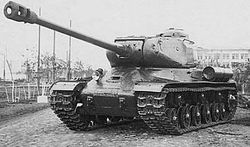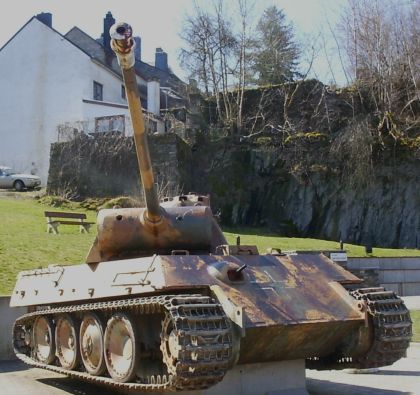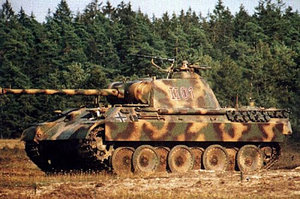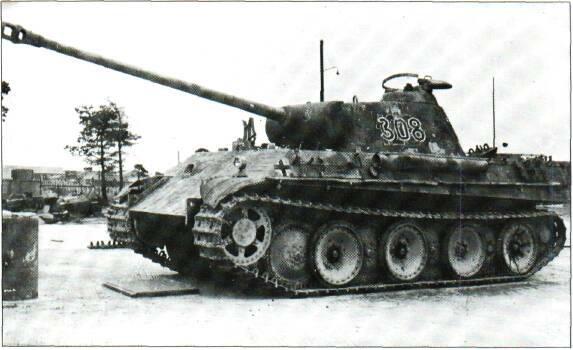I know Im gonna get alot of heat for this but here it goes:
PzKpfw V Panther Heavy Tank
As World War 2 progressed, the Germans maintained there tank superiority by
bringing the PzKpfw V and VI heavy tanks into service in the 40,640-60,960kg/ ton range, well ahead of the Allies. PzKpfw V, or the Panther more commonly known, owes much of its design to a detailed study undertakenof the Russian T-34 which proved greatly superior to PzKpfw III and IV. The Ausk D model Panther, appearing in 1943, weighed 43,690kg/43 tons, mounted a 7.5cm/2.95in KwK42 L/70 gun and had a crew of five. With a top speed of about 45kph/28mph and a radius action of 200km/124.3 miles, it was a formidable opponent.
A total of 850 of the Ausf D model were built, and it was the first to go into service despite the fact that the next model following it was Aushf A! Some 2,000 Ausf As were built between August 1943 and May 1944. It had various improvements over its predecessor, including better running gear, thicker armour and a new commander’s cupola. Teh Ausf G was produced as a result of combat experience with the Ausf D and A. Over 3,000 Ausf Gs were built between March 1944 and April 1945. The hull was redesighned, now without the driver’s vision visor- which mus have been a vulnerable spot. Variants included command and obsevation tanks and also the ARV(Armoured Recovery Vehicle) Berepanther.
PzKpfw V Ausf G Heavy Tank
Entered service:1944
Crew:5
Weight: 45,465kg/45.5 tons
Dimensions: Length-8.87m/29ft 1in Height (over turret hatch)- 2.97m/9ft 9in Width-3.43/11ft 3in
Armament: Main- 7.5cm/2.95in KwK42 L/70 gun
Secondary- 2x7 .92mm/0.312m machine-guns
Armour: Maximum- 100mm/3.94in
Powerplant: Maybach Hl230P30 V12 petrol, 522kW/700hp
Performance: Speed-46kph/28.75 mph Range-200km/125




